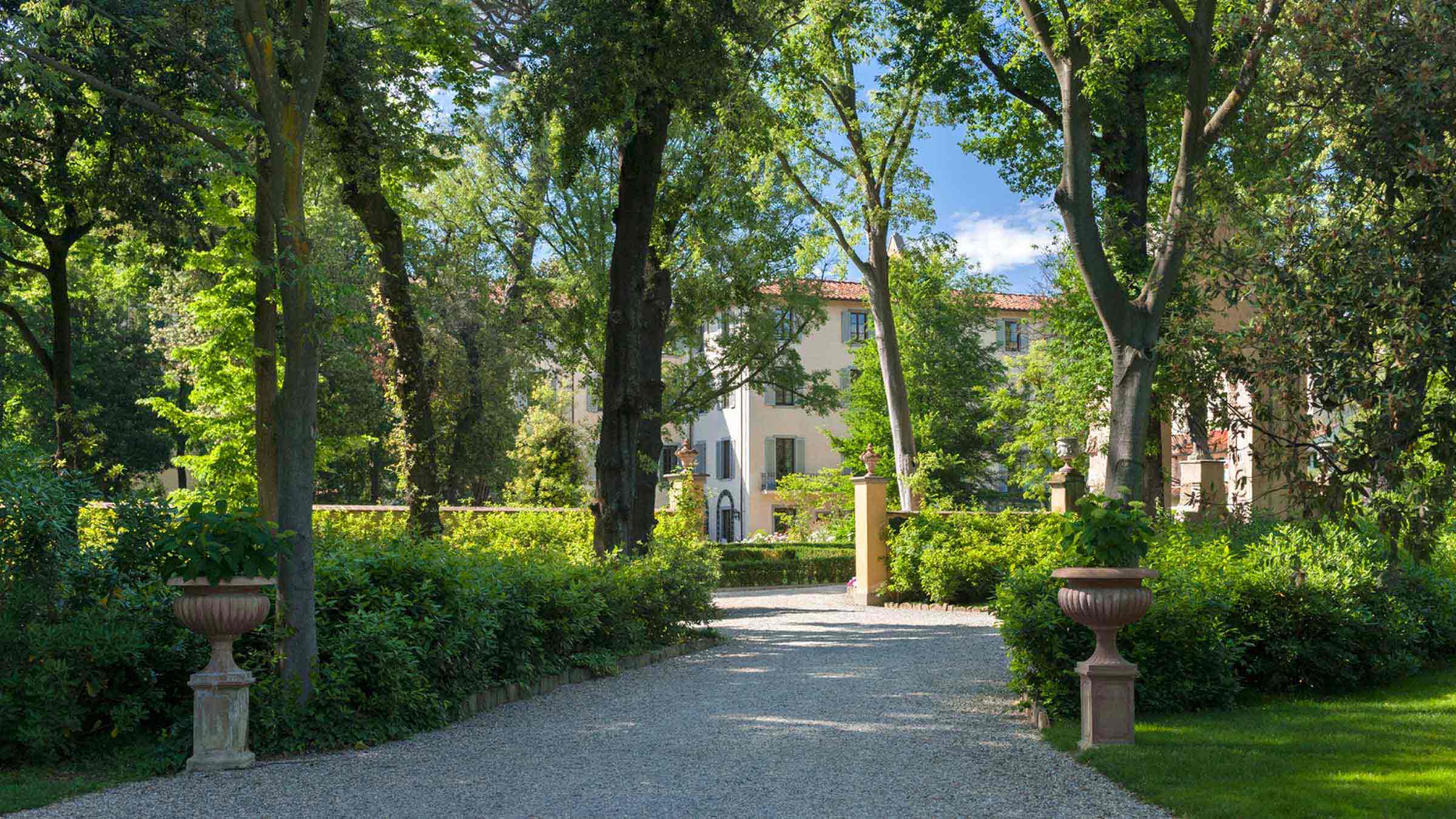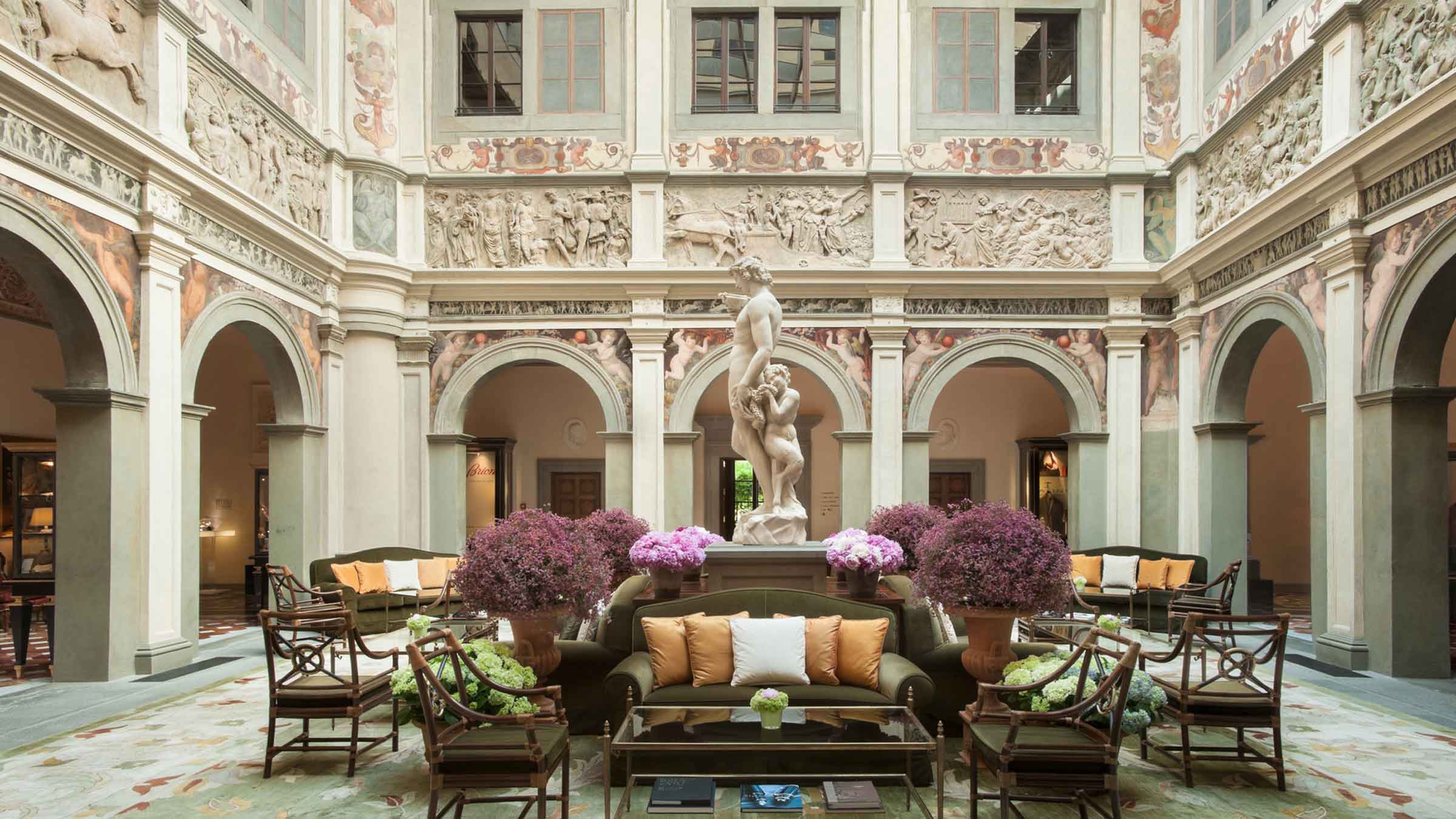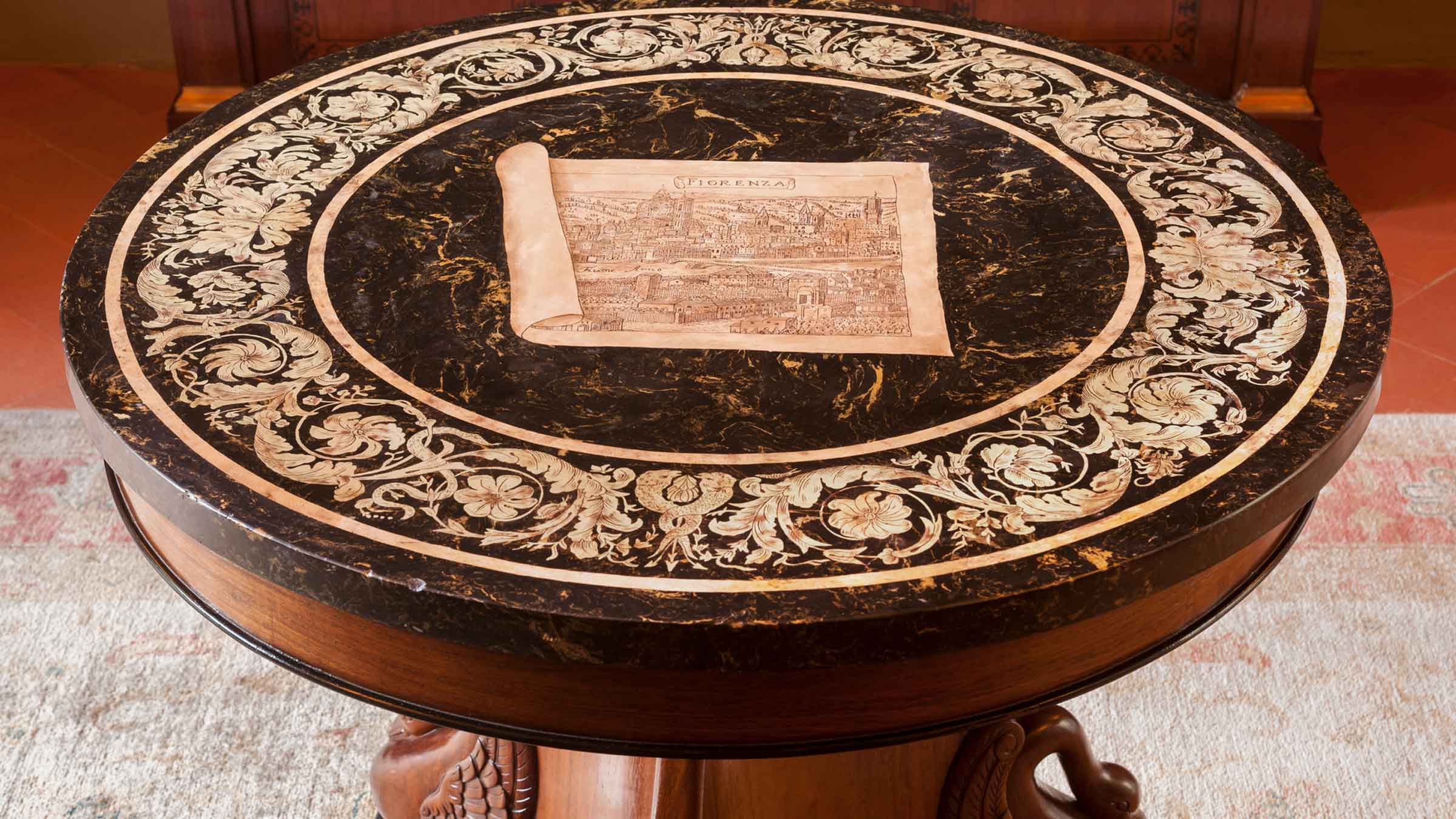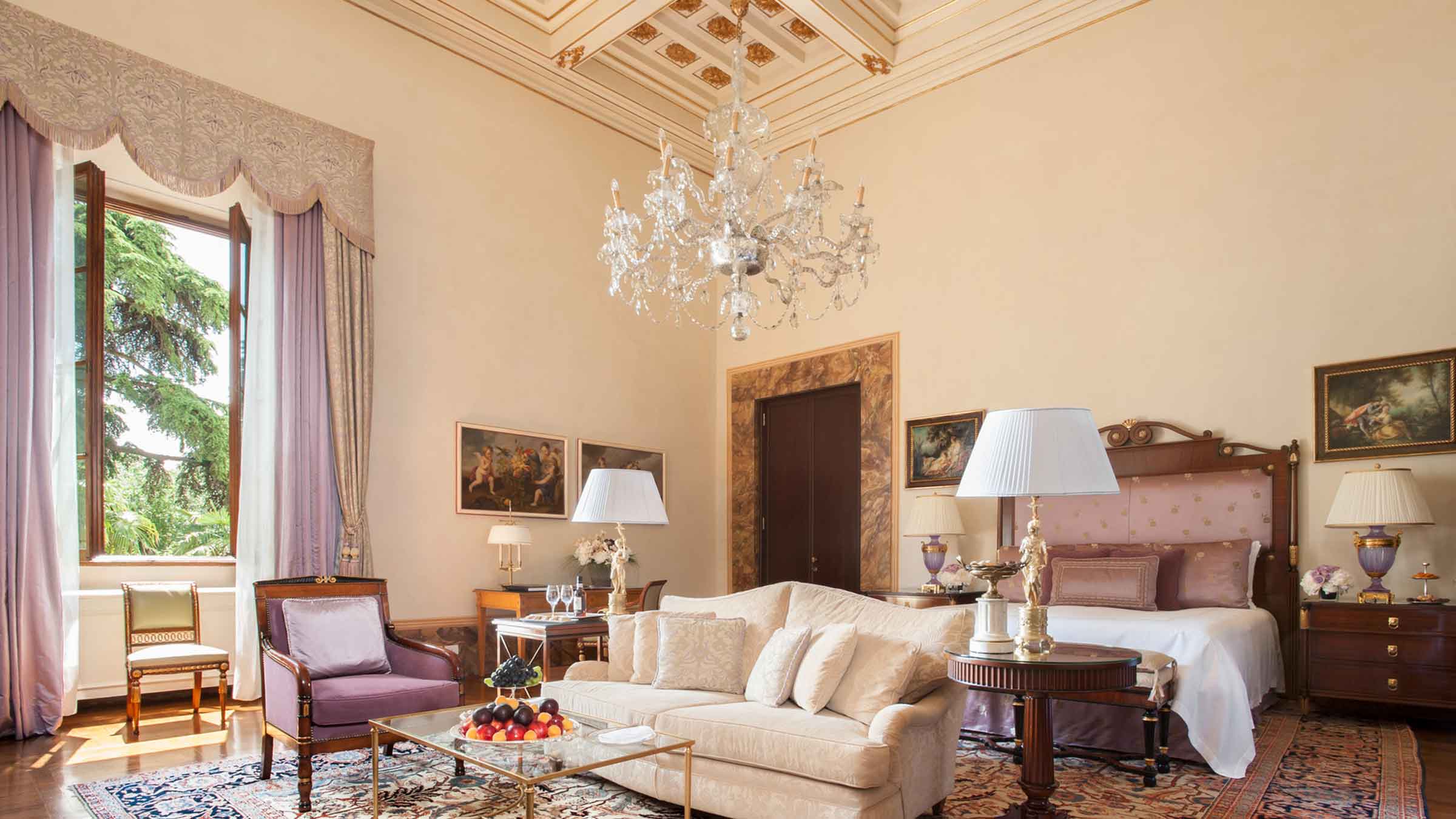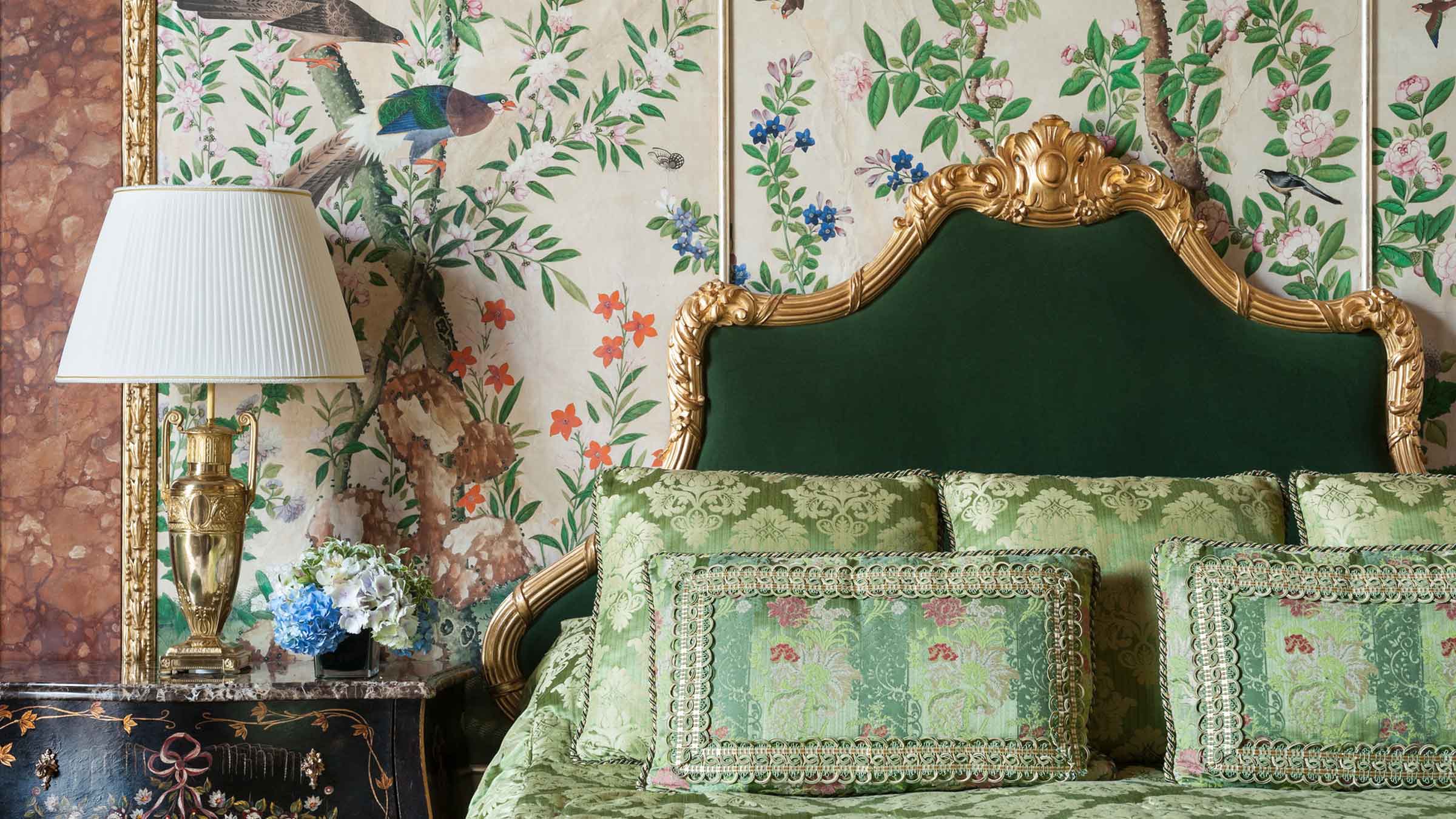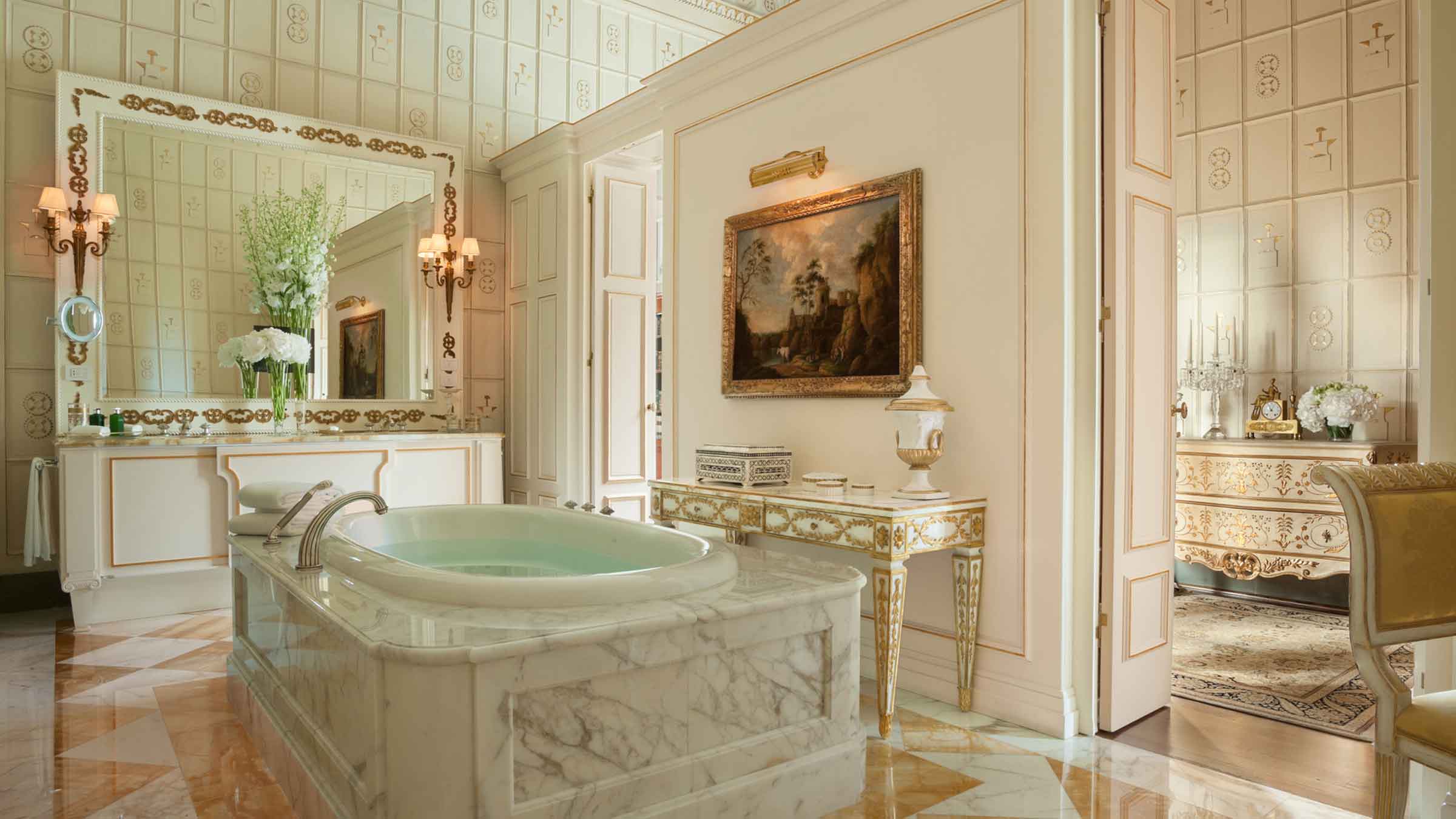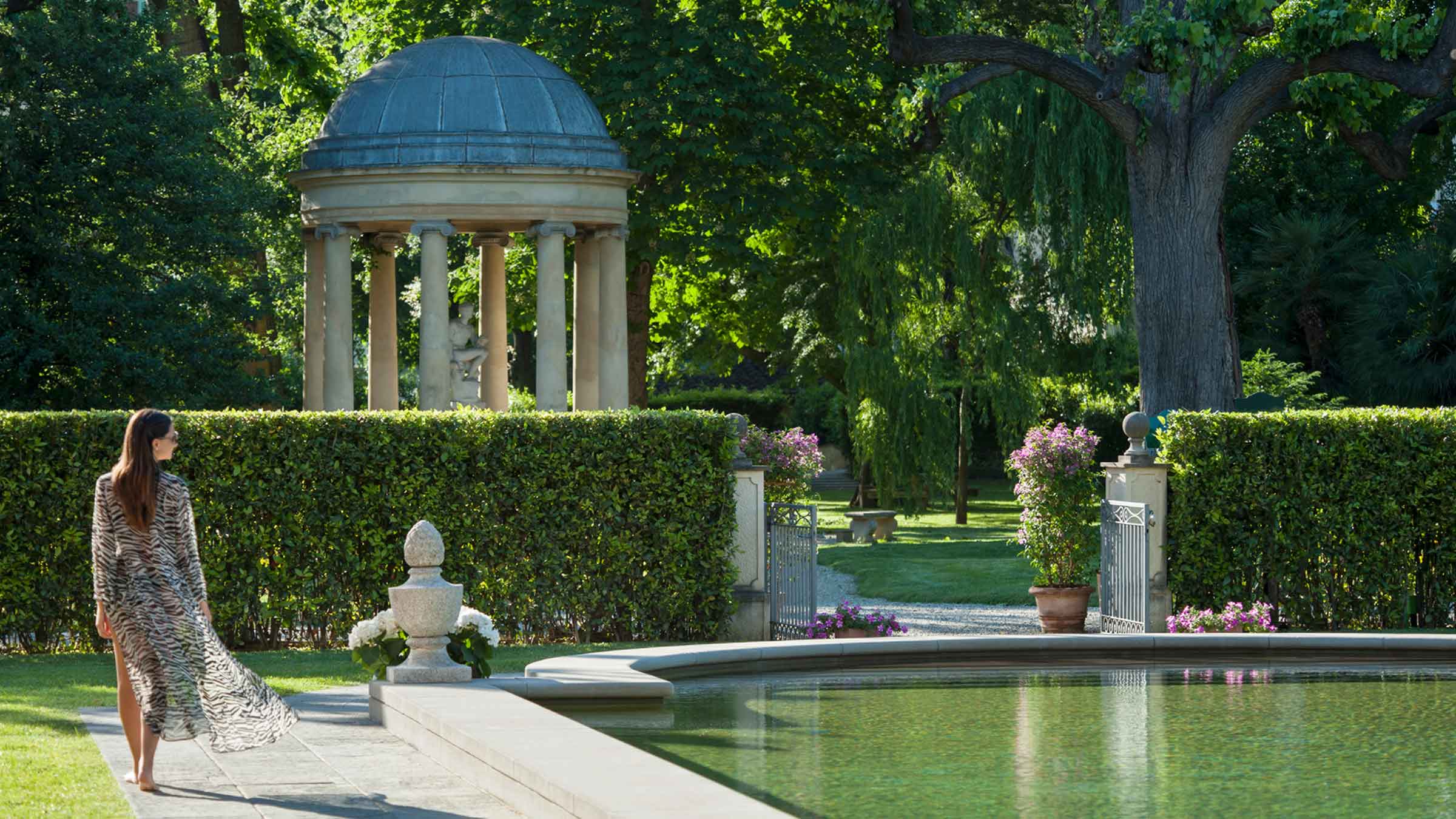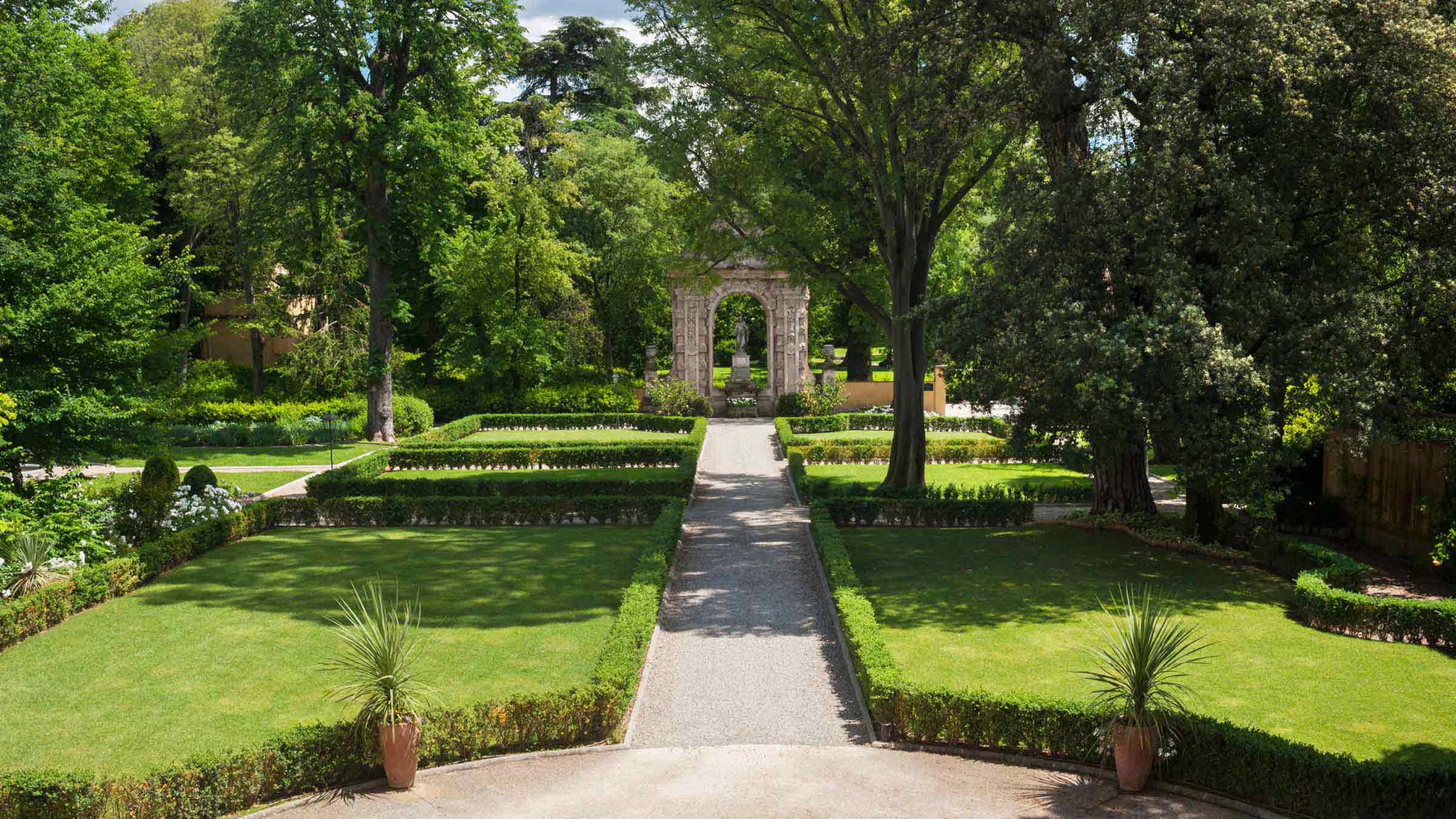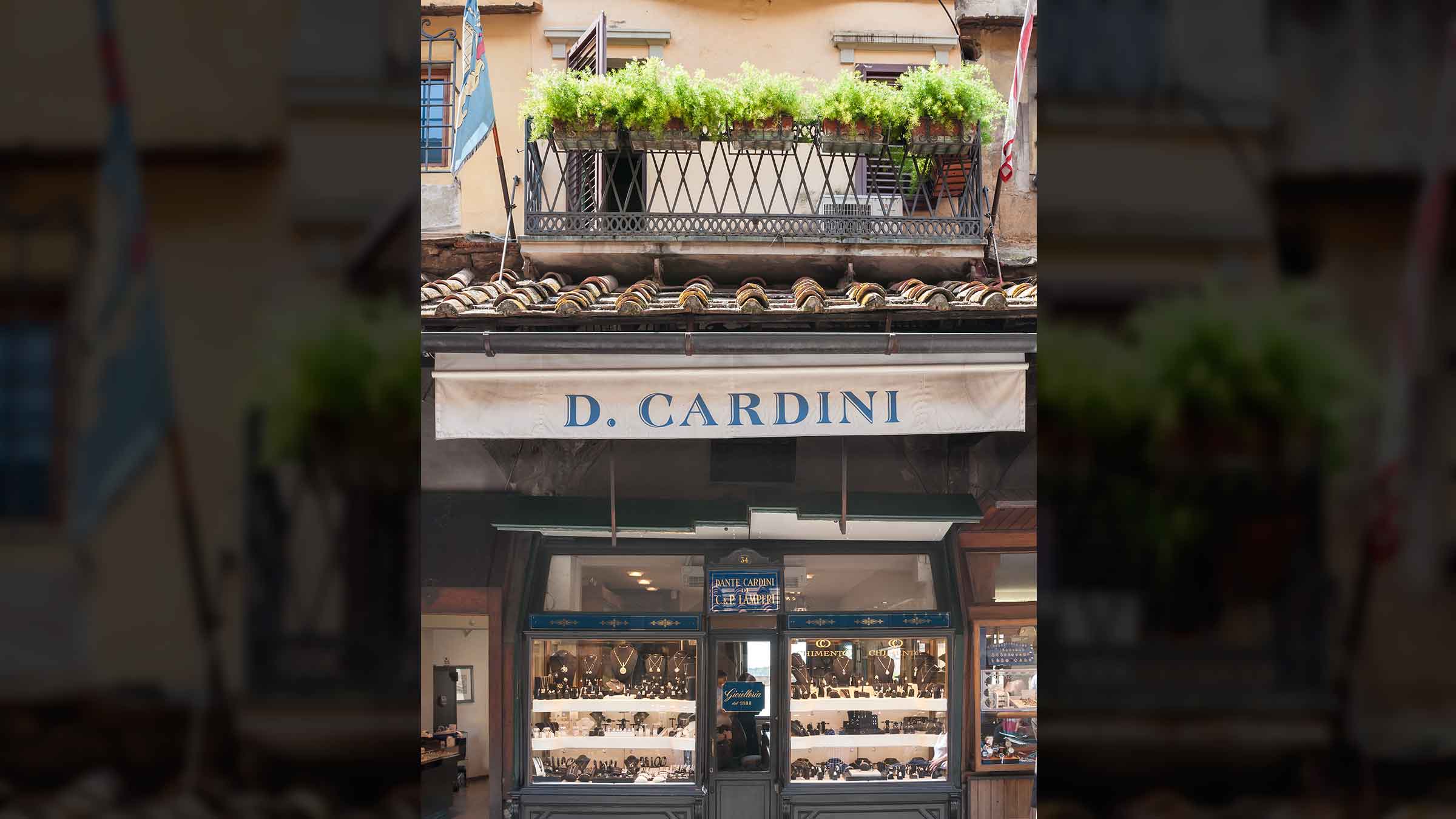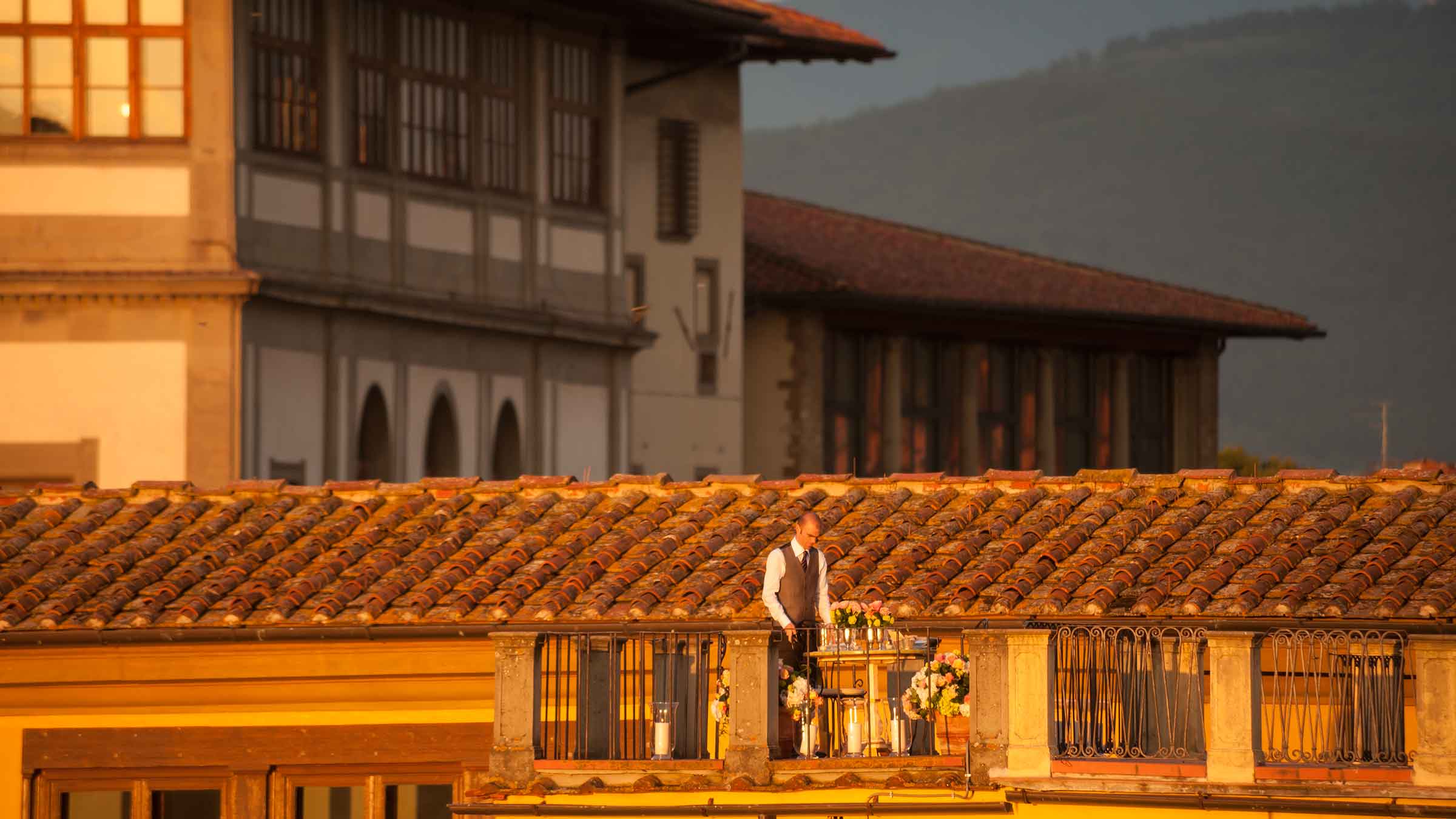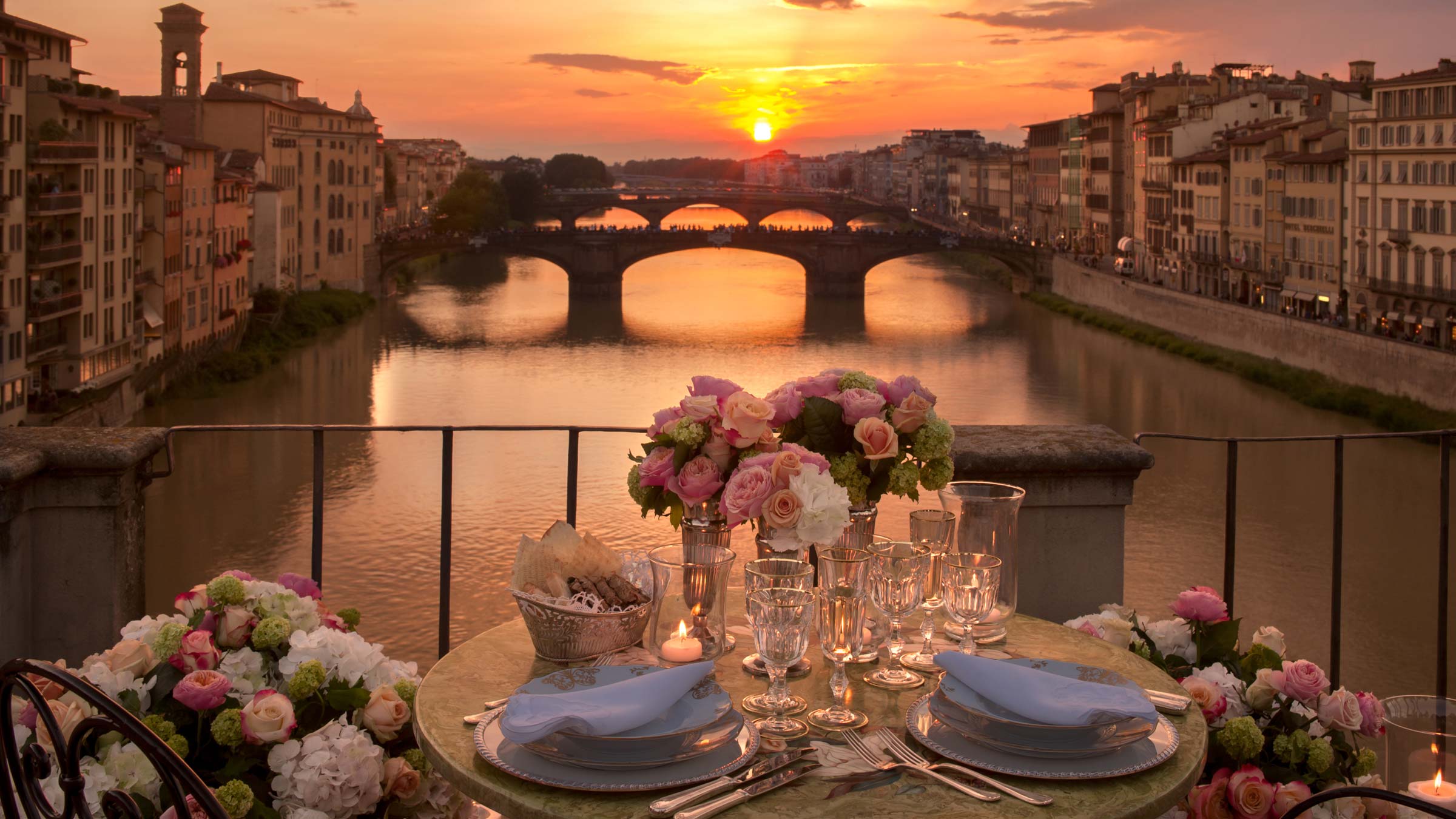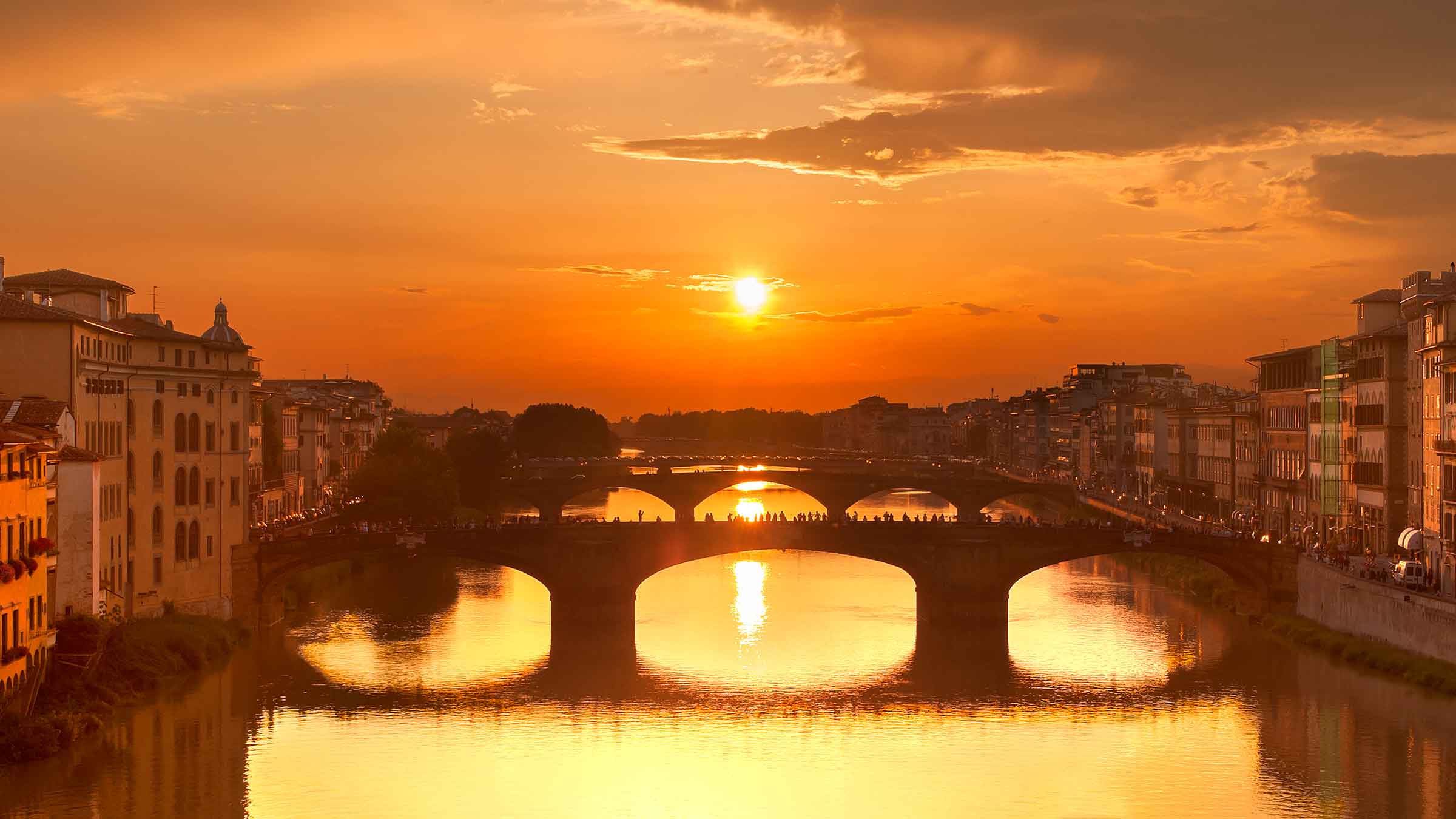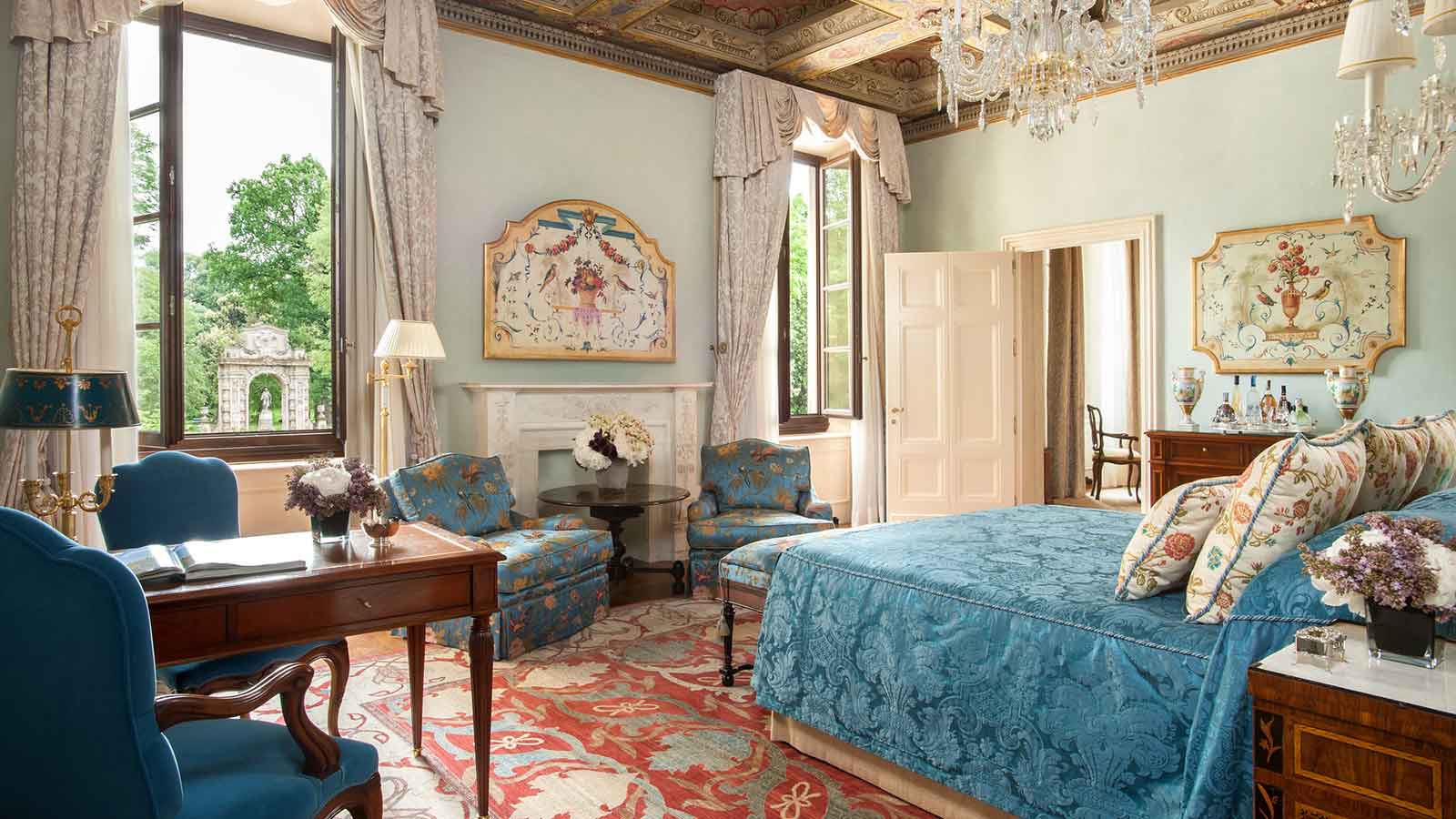At Dante Cardini jewellery shop on Florence’s famed Ponte Vecchio, glittering jewels in glass cabinets outshine the sun that shimmers over the Arno. Fourth-generation owners and first cousins Elisabetta Gardella and Massimo Del Taglia, whose great-grandfather opened the shop in 1888, know that jewellery is part of the Ponte Vecchio’s history.
“The Ponte Vecchio once had butcher shops, but the Medicis hated the smell,” says Gardella. “They adored beautiful things and wanted to elevate the prestige of the bridge, so they moved out the butchers and summoned the jewellers.”
Although jewellery makers no longer work on the Ponte Vecchio, Dante Cardini sells handmade, one-of-a-kind pieces in collaboration with Florentine jeweller Roberto Poggiali.
Besides the sparkling collection, Dante Cardini houses another rare gem. A narrow staircase at the back of the shop winds to a private fourth-storey rooftop terrace, the only one accessible from the Ponte Vecchio. Here, guests of Four Seasons Hotel Firenze are exclusively invited to reserve an unforgettable private dining experience for two.
As the sun sets over the Arno, take a seat, pour the wine and enjoy a personalized menu created especially for the evening, with elegant golden touches that allude to the bridge’s jewellery tradition. From your place on the terrace, the city glistens in the last light of day, evoking the Florence of the Renaissance, of the Medicis—the Florence that inspired the artisans who captured its creative spirit.



